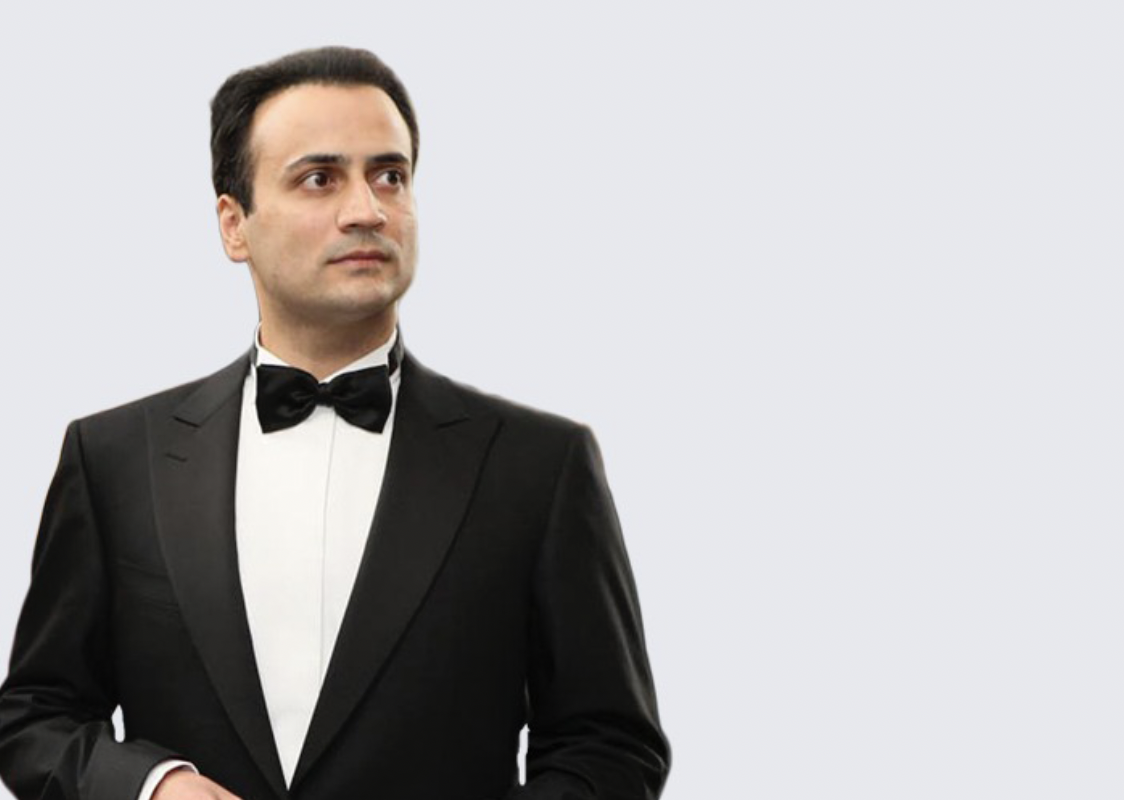Lifestyle
Top Hotelier Sanjeev Nanda discusses Sustainable Hospitality: A Commitment to Environmental Responsibility and Community

The hospitality industry has experienced a transformative shift towards embracing sustainable practices while recognizing the need to protect our planet. Sustainable hospitality is no longer just a buzzword; it has become a powerful commitment to reducing carbon footprints, conserving resources, and positively influencing the lives of people in the areas they operate. Sanjeev Nanda, an esteemed name in the hospitality industry and the Chairman of Neat Foods and Nohm Hospitality, firmly believes that sustainability is the future of hospitality. “Hotels, resorts, and restaurants worldwide have pledged to make a meaningful impact on their surrounding environment and local communities. As a business owner, it is not just about profit; it is about the responsibility we bear towards the planet and the communities we serve,” he adds.
Eco-friendly practices
The growing importance of eco-friendly practices in the hospitality sector cannot be overstated. As the world faces pressing environmental challenges, responsible travellers and consumers demand more from the places they stay and dine. From luxury hotels to quaint bed and breakfasts, sustainable hospitality practices have become a cornerstone for attracting environmentally-conscious guests.
Renewable energy sources have emerged as a pivotal aspect of sustainable hospitality. Hotel chains and resorts have started investing heavily in solar panels, wind turbines, and other renewable energy solutions to power their establishments. “Harnessing renewable energy is not only a means to cut costs but also a step towards mitigating our carbon footprint,” says Nanda. Such initiatives not only decrease the industry’s reliance on fossil fuels but also set an example for other sectors to follow suit.
Waste reduction strategies have also taken centre stage in the pursuit of sustainability. Adopting a circular approach to waste management, where waste is viewed as a resource rather than a burden has become essential. A significant number of hotels and restaurants have been proactive in implementing recycling programs, composting organic waste, and reducing single-use plastics. Additionally, innovative collaborations with local organizations have emerged to convert waste into revenue-generating products, further contributing to the community’s economic growth.
Supporting local communities
Sustainable hospitality goes hand in hand with helping local communities. Sanjeev Nanda asserts, “We have a responsibility to positively impact the communities that graciously host our businesses. Hotels and resorts now prioritize sourcing their produce locally, supporting local farmers, and reducing carbon emissions associated with long-distance transportation.” They also make investments in community development projects such as education, healthcare, and infrastructure, fostering strong bonds with the local population.
Empowering the local workforce is key to creating sustainable employment opportunities. This philosophy has encouraged many hospitality businesses to promote skill development tasks, fair wages, and employee well-being initiatives. Consequently, the industry has witnessed a positive shift towards greater social inclusion and economic stability for communities surrounding these establishments.
Providing valuable experiences
Sustainable hospitality practices also extend to the guest experience. Guests are encouraged to participate in eco-friendly activities and learn about the local environment and culture. It is not just about providing a luxurious stay; it is about creating meaningful experiences that leave a positive impact on the visitors and the places they visit. From nature walks to cultural immersion programs, sustainable hospitality offers unique opportunities for travellers to connect with the destination on a deeper level.
As more hospitality businesses embrace sustainability, the industry’s impact on the environment and local communities is poised to reach new heights. Sanjeev Nanda, the pioneer of internationally renowned establishments like the Billionaire Mansion, Miss Tess, Meda Tapas & Bar, Taj Dubai, and Baoli in UAE, envisions a future where every hotel, big or small, contributes to building a greener, more inclusive world. “This shared commitment to environmental responsibility and community impact will pave the way for a resilient and sustainable hospitality sector that stands the test of time,” he says.
The hospitality sector is weaving eco-friendly practices into its core values, creating a profound impact on the planet and the global society. As travellers and consumers, it is essential to support and celebrate this transformation, for it is in the spirit of sustainable hospitality that we shall collectively secure a brighter and more promising future for generations to come.
Lifestyle
The Future of Education Through Patricia Vlad’s Eyes

The traditional systems that once defined learning, rigid curricula, standardized testing, and a narrow focus on academic performance, are increasingly being questioned. And why is that?
Starting in the 1880s, thinkers like John Dewey advocated for a shift in teaching methods, leading to the rise of progressive education. Unlike traditional models that emphasize rote learning and job preparation, progressive education puts students at the center of the learning experience. Changemakers like Patricia Vlad also believe that hands-on, experiential learning is the key to deeper understanding. This approach prioritizes critical thinking, curiosity, and personal passions, encouraging students to become lifelong learners who actively engage with new ideas and problem-solving. Schools and parents that embrace this model focus not just on what students need to know but on how they can continue to grow and adapt throughout their lives.
As the world changes, so do the skills, knowledge, and adaptability students need to succeed. The future of education is about personalization, inclusivity, emotional intelligence, and meaningful learning experiences.
With years of global teaching experience, Patricia has seen firsthand how different education systems approach learning. She believes that the future of education must embrace neuroscience, technology, and self-awareness to create a system that is not just efficient but also empowering for students.
“Education should be about more than just passing tests. It should equip students with the skills to navigate life, understand their strengths, and feel empowered in their learning journey,” Patricia emphasizes.
The Future Belongs to the Emotionally Intelligent
Unlike technical skills that may become obsolete with automation, EI – our ability to understand and manage emotions, build relationships, and navigate challenges, remains uniquely human. It plays a crucial role in self-awareness, resilience, effective communication, helping individuals excel in both personal and professional life.
When it comes to EQ, think of it like this: Kids with strong emotional intelligence are better at handling stress, resolving conflicts, and overcoming challenges. Studies suggest that EQ is a stronger predictor of long-term success than IQ. And let’s be real, no matter how advanced AI gets, it will never replace the depth and impact of human connection.
How LevelUp Cultivates Emotional Intelligence Through Patricia’s Coaching
1. Learning Will Be Personalized and Strength-Based
Instead of forcing students to fit into a system, education will be tailored to each child’s learning style, strengths, and interests. Neuroscience-backed methods – such as learning based on attention spans, emotional regulation, and brain development research – will be used to create adaptive learning environments, allowing students to progress at their own pace.
Through tools like LevelUp, which incorporates the Big Five Personality Model, teachers and parents will have a better understanding of a child’s cognitive profile, enabling them to offer more personalized support.
2. Emotional Intelligence Will Be a Core Part of Learning
The future classroom won’t just cover maths, science, history, or even language – it will also focus on self-awareness, empathy, and social skills. As research shows language doesn’t just communicate thought; it actively shapes it. The intentional use of language can influence how the brain processes emotion, memory, and social connection – making it a powerful tool for developing emotional intelligence.
LevelUp integrates EI into its framework, ensuring students not only understand themselves better but also build confidence, manage stress, and develop strong interpersonal skills.
3. Education Will Be More Interdisciplinary
The future of learning will move away from isolated subjects and toward interdisciplinary education, where concepts from different fields are connected and applied to real-world problems.
For example, students might blend neuroscience with psychology to understand learning processes or combine technology and art to develop creative solutions.
4. Technology Will Support, Not Supplant Human Connection
In the classroom of the future, meaningful engagement between students and teachers will remain at the heart of learning. Peer collaboration, hands-on projects, and real-time feedback from teachers will continue to be irreplaceable elements of education.
Technology will play a supporting role enhancing, rather than dominating, the learning process.
Whether through gamified modules, virtual simulation, or adaptive platforms, tools like LevelUp will be used intentionally to deepen understanding and personalize feedback, always in service of human connection, not as a substitute for it.
5. Schools, Parents, and Students Will Work Together
Education won’t be confined to the classroom. Parents will play a bigger role in guiding their children’s learning, using tools like LevelUp to track progress, support emotional development, and encourage curiosity at home.
By strengthening the parent-child-teacher connection, education will become a team effort, ensuring every student receives the support they need to reach their full potential.
A Future Built on Empowerment
By combining neuroscience, technology, and emotional intelligence, Patricia is helping to reshape education into something that prepares students not just for exams, but for life itself.
A truly effective education system values each student’s creativity and passions—not just their ability to recall information. Instead of just delivering information and expecting rote memorization for test scores, teachers encourage active, hands-on learning through projects, experiments, and peer collaboration. This approach allows students to explore topics that genuinely interest them, making learning more engaging, meaningful, and personal.
The LevelUp platform, developed under Patricia’s leadership, is contributing to a growing shift toward education that is rooted in self-awareness and real-world readiness. Additionally, emotional intelligence is a core part of learning, not an afterthought.
One story that sticks with Patricia is that of a student named Ethan, who had always been labelled “distracted” in class. His teachers described him as bright but inconsistent, often zoning out or fidgeting during lessons. When his LevelUp profile revealed high reactivity and strong openness, a new picture emerged: Ethan wasn’t disengaged—he was overwhelmed by too much information at once and thrived when topics were explored through hands-on, creative activities.
With this insight, his teacher began breaking tasks into smaller steps and introducing art and building projects tied to the curriculum. For the first time, Ethan started raising his hand during class and even stayed back after school to show his work. “We’d been trying to ‘fix’ him when all we needed was to understand him,” his teacher later shared.
It was a small shift, but for Ethan, it changed everything.
-

 Tech5 years ago
Tech5 years agoEffuel Reviews (2021) – Effuel ECO OBD2 Saves Fuel, and Reduce Gas Cost? Effuel Customer Reviews
-

 Tech6 years ago
Tech6 years agoBosch Power Tools India Launches ‘Cordless Matlab Bosch’ Campaign to Demonstrate the Power of Cordless
-

 Lifestyle6 years ago
Lifestyle6 years agoCatholic Cases App brings Church’s Moral Teachings to Androids and iPhones
-

 Lifestyle5 years ago
Lifestyle5 years agoEast Side Hype x Billionaire Boys Club. Hottest New Streetwear Releases in Utah.
-

 Tech7 years ago
Tech7 years agoCloud Buyers & Investors to Profit in the Future
-

 Lifestyle5 years ago
Lifestyle5 years agoThe Midas of Cosmetic Dermatology: Dr. Simon Ourian
-

 Health7 years ago
Health7 years agoCBDistillery Review: Is it a scam?
-

 Entertainment6 years ago
Entertainment6 years agoAvengers Endgame now Available on 123Movies for Download & Streaming for Free
